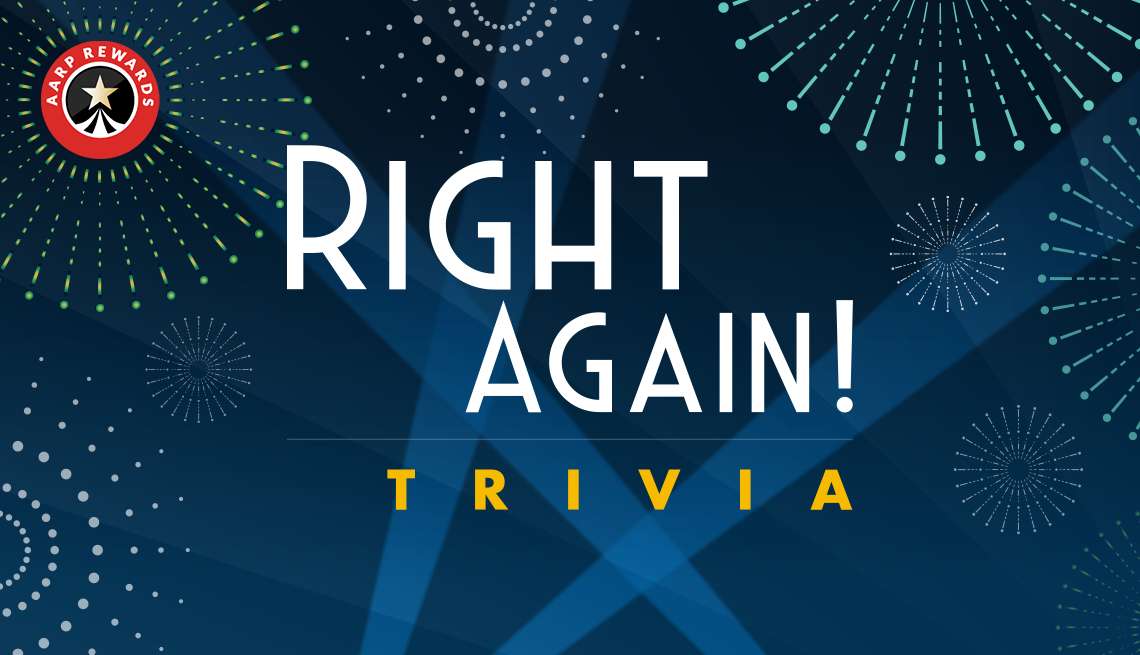AARP Hearing Center
- AARP Online Community
- Games
- Games Talk
- Games Tips
- Leave a Game Tip
- Ask for a Game Tip
- AARP Rewards
- AARP Rewards Connect
- Earn Activities
- Redemption
- AARP Rewards Tips
- Ask for a Rewards Tip
- Leave a Rewards Tip
- Help
- Membership
- Benefits & Discounts
- General Help
- Caregiving
- Caregiving
- Grief & Loss
- Caregiving Tips
- Ask for a Caregiving Tip
- Leave a Caregiving Tip
- Entertainment Forums
- Rock N' Roll
- Leisure & Lifestyle
- Health Forums
- Brain Health
- Healthy Living
- Medicare & Insurance
- Health Tips
- Ask for a Health Tip
- Leave a Health Tip
- Home & Family Forums
- Friends & Family
- Introduce Yourself
- Our Front Porch
- Money Forums
- Budget & Savings
- Scams & Fraud
- Retirement Forum
- Retirement
- Social Security
- Technology Forums
- Computer Questions & Tips
- Travel Forums
- Destinations
- Work & Jobs
- Work & Jobs
- AARP Online Community
- Retirement Forum
- Social Security
- Re: When to claim Social Security Benefits
When to claim Social Security Benefits
- Subscribe to RSS Feed
- Mark Topic as New
- Mark Topic as Read
- Float this Topic for Current User
- Bookmark
- Subscribe
- Printer Friendly Page
- Mark as New
- Bookmark
- Subscribe
- Mute
- Subscribe to RSS Feed
- Permalink
- Report
When to claim Social Security Benefits
When to claim Social Security Benefits ?
I have recently retired at age 62 on Jan 2, 2020. I have residual income for 2020 of approx $46k.
I plan to file to start receiving reduced benefits starting Jan 2021.
I have recently realized that the SS statement estimated benefits at FRA and age 70 are only valid IF you continue working at YOUR CURRENT EARNINGS RATE. Since I have retired and cut all ties with my long time previous employer, I believe these two future estimates are not useful for planning. I might work part time at some point in the future, but there is no guarrantee.
I also downloaded the SS Detailed Estimate Calculator from https://www.ssa.gov/oact/anypia/anypia.html where you input your complete earnings record from your SS statement and select from five sets of assumptions before running the estimate.
The User's guide for the Detailed Calculator recommends using the most pessimistic assumptions for planning purposes. When I run my numbers, I get a good correlation to the SS statement for the age 62. The estimates for FRA and age 70 are the same as age 62.
The real question I would like someone who has knowledge on this topic is;
Assuming I will not work from age 62 forward, how can I confirm the FRA and age 70 projected estimated benefits ?
- Mark as New
- Bookmark
- Subscribe
- Mute
- Subscribe to RSS Feed
- Permalink
- Report
The AnyPIA32 is a great tool but in general a bit complicated to use and interpret the results. I've been using it for years and still find different options to use.
One thing to know is the PIA adjusts annually depending on when you start taking benefits even if you stopped earning income before collecting benefits. Look on page 5 at the CPI increases applied. The CPI increases are from the table in the Benefit Increase Assumptions you select. The CPI is applied every year to your base PIA to get the result PIA they display at the top of the calculations.
To see your benefit at different ages, change the line "Date of Entitlement" in the Forms, Supplemental Worker Info tab and then see the line marked "Benefit after rounding = $xxxx.00" near the top of the calculations page. Two lines above that is the factor applied to the PIA for reduction or delay credits increase. I don't recommend using the checkbox under the Supplemental Worker Info for "Calculate benefit after initial entitlement". All it does is compute a future PIA but it shows the PIA factor for the date you put in "Date of Entitlement." It's more of a confusion factor than a help. See the additional CPI years it applies on calculations on Page 5.
Here's a caveat to putting in a start date after your FRA but before age 70. The delay increase factor applied is only for the months in the previous year before you start benefits. So if your FRA month was in November 2022 and you started your benefits the next year in July 2023, you would only receive 2 months of delayed credits for the months of Nov and Dec after your FRA during your first calendar year of benefits 2023. The delay credits for the Jan-Jun months won't be added until Jan of the following calendar year 2024. The only way to get all your delayed credits on your first check is to start your benefits in January or start the month you turn 70. Waiting to age 70 is the only way you get all of your delayed credits on the first check.
If you like you can change the assumption data under the Properties tab. Each of the Forms, Assumptions selections has a table under the Properties tab. This might be necessary if you do a "Calculate benefit after initial entitlement" check box to look at a future PIA. You can play with the CPI amounts for each year.
Hope this helps in using the program. It's very accurate when used properly but there are a lot of ways to screw it up.
- Mark as New
- Bookmark
- Subscribe
- Mute
- Subscribe to RSS Feed
- Permalink
- Report
You are correct that the values reported on "My Social Security" are based on the assumption that work is continuous to the indicated age. So this information is not useful for someone who wants to delay taking benefits after they "retire"...in the sense of not working any longer.
You are working with the "gold standard" if you are using the anypia32.exe software. The introduction says it's not the same program used for "official" calculations but it is highly accurate and reflects their interpretations of relevant laws and regulations.
It seems that you are very familiar with the rules, etc. So you understand that your benefit is based on your "PIA" -- the primary insurance amount, at your normal retirement age (your "Full Retirement Age", I noticed that sometimes the SSA alters their nomenclature to refer to "normal retirement age" instead "full retirement age").
...Then if you take benefits early the PIA is subjected to a reduction based on the number of months "early". Similarly, if benefits are delayed you get "delayed retirement credits" for each month of delay.
For many people (my cohort, with FRA at 66) this comes to 8% per year from age 66 to age 70, a total of an extra 32% added to the PIA (plus any cost of living increases in the meantime). As the FRA varies with birth year the total increase will vary as well, but currently age 70 is the oldest age to which you can delay taking benefits.
Bear in mind that the COLA is determined each year, so the anypia32 program from any given year will not "know" what the COLA will be in the future.
You can enter your earnings data into the anypia32 program (and I assume you have), then enter the data for your early retirement at age 62. The program will report your PIA and then reduce the benefit based on the number of months "early" (and the rules for early and deferred benefits are all on-line). You can also run for your FRA and for delaying benefits until age 70. You should see differences in these three amounts (though the PIA will remain the same...EDIT: see my follow up post for minor correction).
Should you be really interested, you can delve into how the PIA is determined, with the average factored income, the "bend points", etc. This is all there in the program report.
I like the anypia32 program but it seems that it's also a bit tricky to get the inputs set up properly for what I want to do.
Really, once you know your PIA you can calculate your benefit at ages 62 and 70 quite easily just by applying the proper factored amount for the months "early" or "delayed". This will give you a good check that the program inputs are correct.
The SS system is supposed to be actuarially neutral, meaning that to them the overall amount paid out in benefits is essentially the same regardless of individual people taking benefits early or later. But those individual persons may have other thoughts and may want to take benefits early or later depending on their individual circumstances. I, for one, plan to take at age 70 in order to maximize the potential survivor's benefit for my wife, who is 11 years younger than me. But someone who is single will not have this concern, and they may want to take benefits earlier rather than later. Each person has to consider their situation. I don't think though that the decision need take into account any possible issue with solvency of the system or overarching political issues.
- Mark as New
- Bookmark
- Subscribe
- Mute
- Subscribe to RSS Feed
- Permalink
- Report
Let me correct my comment that the PIA will remain the same for those three situations...take benefits at age 62, age 66, and age 70. I guess I am too sleepy.
The PIA at age 62 is expected to be smaller than for the other two ages. This is because you are losing out on the income for those 4 years from age 62 to 66 (ie: years for your ages 63 through 66). Presumably this will bring down your averaged income for the 35 highest-earning years.
So the drag of retiring and taking benefits at age 62 may have a profound effect because the drag of (1) smaller income base and (2) penalty of the early retirement benefit. Ouch!
- Mark as New
- Bookmark
- Subscribe
- Mute
- Subscribe to RSS Feed
- Permalink
- Report
More awake today, I ran anypia32 with my sample data set, changing some inputs to reflect birth year of 1958 and adding income up through 2020 (and taking some off the early end). My sample income set is probably "middle income", with some years of maxing out.
So I ran for taking SS benefits at 3 ages:
age 62
age FRA (66 and 8 months)
age 70
The reported PIA was same for all three ages, $2975.90 (of course, this is based on my random sample income set).
But the actual monthly benefits are reported as:
age 62 - $2,145 - decreased for early benefits
age FRA - $2,975
age 70 - $3,769 - increased for delayed retirement credits (DRC)
At your point in time you can directly compare these amounts as they are not confused by any COLAs. Someone looking back retrospectively (as I would be) will have to back out the COLA's back to my age 62 and age 66 (I will be 68 shortly), which confuses the picture a bit and would magnify the apparent benefit of waiting until 70.
But here it can be seen how taking at the various ages compares. Of course, there may be/will be COLAs between now and the amounts at future ages, but then the age 62 amount will also gain by the same COLA.
Good luck.
- Mark as New
- Bookmark
- Subscribe
- Mute
- Subscribe to RSS Feed
- Permalink
- Report
You might want to call your local Social Security Administration office or check with your tax advisor.
@SteveS2020 wrote:When to claim Social Security Benefits ?
I have recently retired at age 62 on Jan 2, 2020. I have residual income for 2020 of approx $46k.
I plan to file to start receiving reduced benefits starting Jan 2021.
I have recently realized that the SS statement estimated benefits at FRA and age 70 are only valid IF you continue working at YOUR CURRENT EARNINGS RATE. Since I have retired and cut all ties with my long time previous employer, I believe these two future estimates are not useful for planning. I might work part time at some point in the future, but there is no guarrantee.
I also downloaded the SS Detailed Estimate Calculator from https://www.ssa.gov/oact/anypia/anypia.html where you input your complete earnings record from your SS statement and select from five sets of assumptions before running the estimate.
The User's guide for the Detailed Calculator recommends using the most pessimistic assumptions for planning purposes. When I run my numbers, I get a good correlation to the SS statement for the age 62. The estimates for FRA and age 70 are the same as age 62.
The real question I would like someone who has knowledge on this topic is;
Assuming I will not work from age 62 forward, how can I confirm the FRA and age 70 projected estimated benefits ?
"I downloaded AARP Perks to assist in staying connected and never missing out on a discount!" -LeeshaD341679












































































